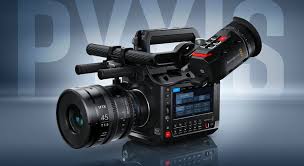Samsung QD-OLED TV confirmed, but just call it Samsung OLED

Buried in a press release among the pricing and pre-order information for the rest of Samsung’s 2022 TV line is the confirmation many TV enthusiasts have been waiting for. Samsung has a TV built on the QD-OLED technology pioneered by Samsung Display that’s also already found in Sony’s A95K TV and the Dell Alienware 34 QD-OLED computer monitor.
Samsung wants you to just call it Samsung OLED.
Editor’s note: Shortly after announcing that pre-order had begun on these TVs, Samsung reached out to Digital Trends to let us know that the prices provided for the Samsung OLED TV were incorrect. This article now reflects the new, lower prices.

The new Samsung OLED TV (S95B) will be available in 55-inch and 65-inch models, priced for pre-order at $2,200 and $3,000 respectively. Samsung’s OLED TV is available for pre-order now.
The naming convention for this TV has been at the heart of much speculation among tech journalists and TV enthusiasts. Given Samsung’s nearly 10-year history of rebuffing OLED in favor of its QLED line of TVs, some thought Samsung Electronics might call its TV QD-Display, Neo QD, or some other variation that perhaps not-so-deftly avoided the OLED moniker.

It appears that Samsung is bucking that speculation and staring OLED dead in the eyes. Of course, this is not the same version of OLED to which consumers have become accustomed over the past 10 years. That technology, pioneered by LG Display and used in TVs made by LG, Sony, Philips, and others, is a technology called WRGB and differs from the QD-OLED display tech Samsung is using, which combines blue OLEDs with red and green quantum dots.
You can learn more by reading our Samsung Display QD-OLED explainer.
Like all OLED-based TVs, the Samsung OLED will be incredibly thin. The company calls it “LaserSlim,” though from what we can see in the images above, it’s got a similar profile to both LG and Sony OLED models, with a very thin display layer and a somewhat chunkier electronics section at the base.
Feature-wise, the Samsung OLED appears to have everything you could ask for in a premium 4K TV. That list includes four HDMI 2.1 ports, with support for 4K @ 120Hz, auto low-latency mode (ALLM), variable refresh rate (VRR — including AMD Freesync Premium), HDMI quick switching, and HDMI ARC/eARC on HDMI port 3. HDR10, HLG, and HDR10+ Adaptive are all present, but as we’ve come to expect from all of Samsung’s HDR TVs, Dolby Vision is still a no-show.
Buyers in the U.S. will get an ATSC 3.0 (NextGen TV) tuner built-in, but there’s no support at the moment for Advanced HDR by Technicolor, which is one of the HDR formats used by some ATSC 3.0 stations.
It’s no slouch when it comes to audio. It’s Dolby Atmos-capable and should do a decent job of rendering that content thanks to its 60-watt, 2.2.2 channel speaker system featuring dedicated woofers. This includes Samsung’s Object Tracking Sound, which is meant to create a more realistic connection between the on-screen action and the sound you hear. Despite the fact that OLED displays can be used as full-screen speakers (which Sony uses on its Bravia OLED TVs), neither Samsung, Vizio, nor LG have chosen to use this technology.
Like all of the company’s high-end TVs, it gets Q-Symphony, which lets the OLED TV sync up with a compatible Samsung soundbar for even better sound quality using the TV’s speakers as add-ons to the soundbar’s drivers.
The Tizen smart TV software incorporates Amazon Alexa, Google Assistant, and Samsung’s own Bixby as voice assistant options via built-in far-field microphones.
It will be interesting to see how Samsung’s implementation of this display technology differs from Sony’s implementation in the A95K television. Since the display panel is the same, the difference between Samsung’s TV and Sony’s will essentially come down to processing and a few key engineering decisions. However, given that there is a $1,000 difference between the price of Samsung’s 65-inch OLED and Sony’s 65-inch A95K, we’ll be paying close attention to see if Sony can still justify its higher price. Sony’s inclusion of its Bravia Cam webcam add-on goes some of the way on this, as does its innovative multiposition stand.
Editors' Recommendations

 United Kingdom
United Kingdom Argentina
Argentina  Australia
Australia  Austria
Austria  Brazil
Brazil  Canada
Canada  Germany
Germany  Ireland
Ireland  Italy
Italy  Malaysia
Malaysia  Mexico
Mexico  New Zealand
New Zealand  Poland
Poland  South Africa
South Africa  United States
United States 
























